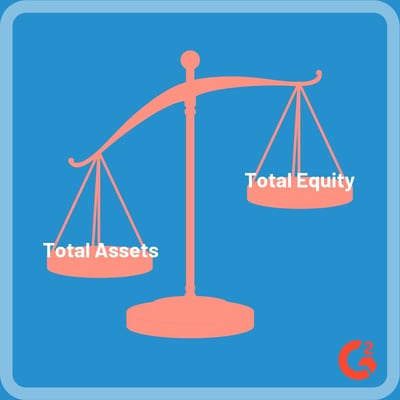You walk into your office Monday morning and spy a colleague enjoying a powdered donut.
Your stomach rumbles...you haven’t even eaten breakfast yet, and the way he’s dunking that thing in his mug of coffee tempts you to grab one for yourself. Rounding the corner into the kitchen, you notice there are a mere two donuts left out of the original dozen, and it’s only 9:01.
“The donuts must be delicious,” you think to yourself, grabbing the penultimate pastry and returning to your desk. The donut is indeed quite delicious.
You didn’t need a financial ratio to tell you that investing some of your daily calories in donut consumption was a good idea, but you were able to tell just how delicious those donuts were based on the fact that they were almost gone by the time you got to them. Investors (of money, not calories) do the same thing when they use equity ratio to decide which companies to invest in.
What is equity ratio?
Equity ratio compares a company’s total equity against its total assets, telling you how much of the company is funded by shareholders, equity investors, retained earnings, and other types of equity capital as opposed to loans, bonds, and other types of debt capital.
Equity ratio formula
Equity ratio = Total equity/Total assets
The ratio can be shown as a decimal or a percentage—the closer to 1.0 or 100%, the higher the equity ratio. A company whose equity ratio is 100% has all of its assets financed with equity rather than debt.

What is a good equity ratio?
A good equity ratio, like all financial ratios, varies by industry. Some industries have higher standards than others, based on volatility and industry trends. Between two companies in different industries, you couldn’t determine which one has a better equity ratio without first comparing each one to its own industry’s benchmarks. Investors use financial research software can be used to compare equity ratios across industries.
In general, a higher equity ratio is considered better. A company with a high equity ratio seems more trustworthy to investors. The lower the equity ratio, the more of a company’s assets are funded by debt and the riskier it is to invest in.
Think of it like a snowball effect: a company with a high equity ratio has a lot of shareholders already invested. Other potential investors see that high ratio and determine that if other investors already trust the company, they could trust it too.
How to find equity ratio
The first step in determining a company’s equity ratio is to find information about its total equity and total assets. This information can be found on a company’s balance sheet. As an example, let’s take a look at 2018 data from Hostess (TWNK), courtesy of Nasdaq.
| Tip: Total equity, also known as total shareholder equity, is usually summed up on a balance sheet, but you can also find it by subtracting total assets from total liabilities. |
Total equity: $1,199,803,000
Total assets: $3,010,713,000
Equity ratio = $1,199,803,000/$3,010,713,000 = 0.40, or 40%
Hostess’s equity ratio is 0.40 or 40%, meaning that the company has financed 40% of its assets using equity and the other 60% with debt.
Should you eat that donut?
Equity ratio can help you decide whether or not to invest in a company. Thinking like a financial advisor can help you in your everyday life. It’s all about balancing risk and reward.

 by Maddie Rehayem
by Maddie Rehayem
 by Maddie Rehayem
by Maddie Rehayem
 by Harshita Tewari
by Harshita Tewari